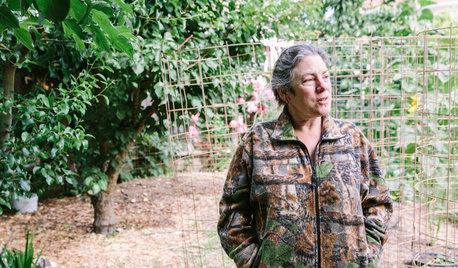My New Grass Seed Didn't Grow - what did I do wrong?
lee676
13 years ago
Featured Answer
Sort by:Oldest
Comments (14)
lee676
13 years agoRelated Professionals
Mountain Brook Landscape Architects & Landscape Designers · Owings Mills Landscape Architects & Landscape Designers · Clayton Landscape Contractors · Dunwoody Landscape Contractors · Fairfield Landscape Contractors · New Cassel Landscape Contractors · San Bruno Landscape Contractors · Kingsburg Landscape Contractors · Vadnais Heights Landscape Contractors · Atwater Carpenters · Channahon Carpenters · Burlington Fence Contractors · Lady Lake Fence Contractors · Olive Branch Fence Contractors · Yorba Linda Fence Contractorsoilpainter
13 years agooregonwoodsmoke
13 years agoflora_uk
13 years agodelightedinco
13 years agolee676
13 years agocates5
13 years agolee676
13 years agocates5
13 years agokyle_rollings
7 years agolast modified: 7 years agokyle_rollings
7 years agokylerollins7
6 years agokfless
6 years ago
Related Stories

EDIBLE GARDENSHouzz Call: What Did You Grow This Summer?
Let’s celebrate the homegrown fruits and vegetables of the season. Post your pictures and tell us about your harvest
Full Story
GARDENING GUIDESHow to Plant a New Lawn From Seed
Choose from more grass varieties and save money over sod by starting your lawn from seed
Full Story
MOST POPULARSummer Crops: How to Grow Sunflowers
Savor snack-tastic sunflower seeds once the radiant blooms have faded — if the birds have saved you any, that is
Full Story
FARM YOUR YARDTo Get the Food They Believe In, These Urbanites Grow Their Own
Home gardeners farming on their city lots find that local, organic food isn’t the only reward
Full Story
LIFEYou Said It: ‘Every Room Should Have the Right Wrong Thing’ and More
This week on Houzz we were inspired to break out of catalog styling ruts and let our design freak flags fly
Full Story
FARM YOUR YARDHow to Grow Vegetables in Containers
Get glorious vegetables and fruits on your patio with a pro’s guidance — including his personal recipe for potting mix
Full Story
EARTH DAYGrow a Beautiful Garden With Ecofriendly Greywater
Reducing home water waste means lower bills and a healthier planet. Here's how to set up a greywater home irrigation system that can help
Full Story
GARDENING GUIDESWhat's Wrong With My Plant? Leaves Often Hold the Clues
Learn how to identify common plant ailments by reading their leaves
Full Story
DISASTER PREP & RECOVERYRemodeling After Water Damage: Tips From a Homeowner Who Did It
Learn the crucial steps and coping mechanisms that can help when flooding strikes your home
Full Story
EDIBLE GARDENSHow to Grow Your Own Sweet Summer Crops
This guide will help any gardener get started on growing the freshest warm-season veggies and berries for summer
Full StoryMore Discussions







oilpainter